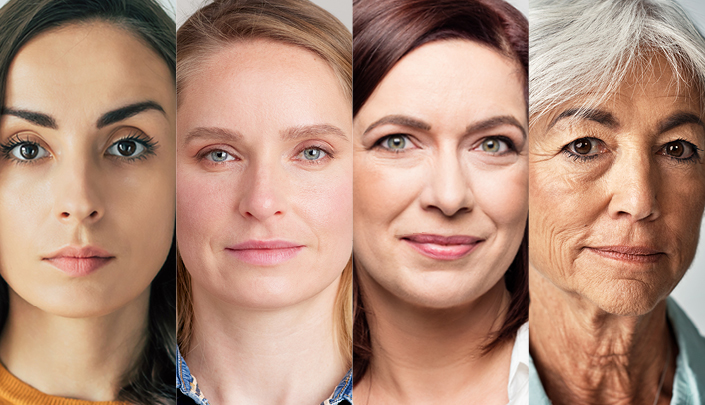The Glogau Wrinkle Scale is a standardized method for describing and categorizing the visible signs of skin aging caused by sun exposure. Here are the built-in descriptions for each group:

Group I: This group, characterized by slight photoaging, generally includes individuals aged between 28 and 35 years. At this stage, there are no permanent wrinkles, and signs of photoaging are early, with no keratosis (skin thickening) evident. There may be minimal wrinkles, often only visible with facial expression, and slight pigmentary changes, which may appear as slight irregularities in skin tone.
Group II: In this group, typical for individuals between the ages of 35 and 50, photoaging is mild to moderate. Expressive wrinkles, visible during laughter or yawning, begin to become more pronounced. Brown spots begin to develop, and the keratosis may be palpable but not visible. The wrinkles parallel to the smile become more evident.
Group III: Individuals in this category, usually between the ages of 50 and 65, show signs of advanced photoaging. There are wrinkles present even when the face is at rest. The skin may have discolorations (changes in color), telangiectasias (permanent dilation of small superficial blood vessels), and visible keratoses. Skin furrows become deep.
Group IV: This group, usually between the ages of 60 and 75, shows signs of severe photoaging. Wrinkles are present all over the face, and there are no areas of smooth skin. Skin color may become yellowish-gray. Skin neoplasms (abnormal skin growths that may or may not be cancerous) may begin to develop. The make-up can become intolerable due to the texture of the skin.
It is important to note that sun exposure without adequate protection can accelerate photoaging, and therefore it is always advisable to protect your skin when outdoors.